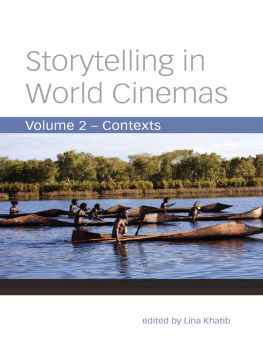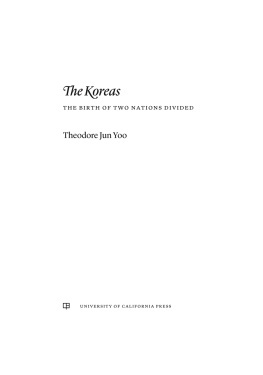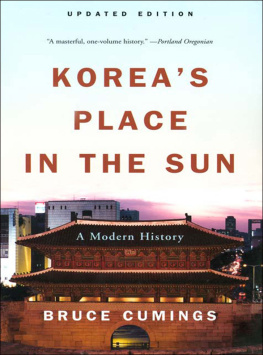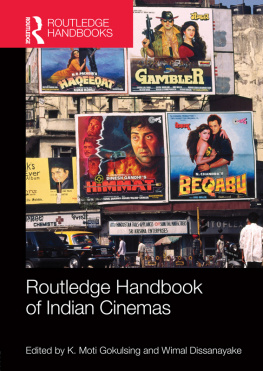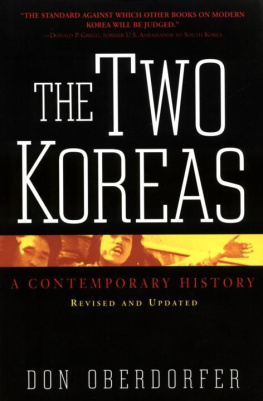Koreas Occupied Cinemas, 18931948
Routledge Advances in Film Studies
1 Nation and Identity in the New German Cinema
Homeless at Home
Inga Scharf
2 Lesbianism, Cinema, Space
The Sexual Life of Apartments
Lee Wallace
3 Post-War Italian Cinema
American Intervention, Vatican Interests
Daniela Treveri Gennari
4 Latsploitation, Exploitation Cinemas, and Latin America
Edited by Victoria Rutalo
and Dolores Tierney
5 Cinematic Emotion in Horror Films and Thrillers
The Aesthetic Paradox of Pleasurable Fear
Julian Hanich
6 Cinema, Memory, Modernity
The Representation of Memory from the Art Film to Transnational Cinema
Russell J. A. Kilbourn
7 Distributing Silent Film Serials
Local Practices, Changing Forms, Cultural Transformation
Rudmer Canjels
8 The Politics of Loss and Trauma in Contemporary Israeli Cinema
Raz Yosef
9 Neoliberalism and Global Cinema
Capital, Culture, and Marxist Critique
Edited by Jyotsna Kapur and Keith B.Wagner
10 Koreas Occupied Cinemas,18931948
Brian Yecies and Ae-Gyung Shim
Koreas Occupied Cinemas, 18931948
Brian Yecies and Ae-Gyung Shim
First published 2011
by Routledge
711 Third Avenue, New York, NY 10017
Simultaneously published in the UK
by Routledge
2 Park Square, Milton Park, Abingdon, Oxon OX14 4RN
Routledge is an imprint of the Taylor & Francis Group, an informa business
2011 Taylor & Francis
The right of Brian Yecies and Ae-Gyung Shim to be identified as authors of this work has been asserted by them in accordance with sections 77 and 78 of the Copyright, Designs and Patents Act 1988.
All rights reserved. No part of this book may be reprinted or reproduced or utilised in any form or by any electronic, mechanical, or other means, now known or hereafter invented, including photocopying and recording, or in any information storage or retrieval system, without permission in writing from the publishers.
Trademark Notice: Product or corporate names may be trademarks or registered trademarks, and are used only for identification and explanation without intent to infringe.
Library of Congress Cataloging-in-Publication Data
Yecies, Brian, 1967
Koreas occupied cinemas, 18931948 : the untold history of the film
industry / by Brian Yecies, with Ae-Gyung Shim.
p. cm. (Routledge advances in film studies ; 10)
Includes bibliographical references and index.
1. Motion picture industryKoreaHistory20th century. 2. Motion
picturesKoreaHistory20th century. 3. Motion picturesKorea
Foreign influences. 4. KoreaHistoryJapanese occupation, 1910
1945. I. Shim,Ae-Gyung, 1973 II. Title.
PN1993.5.K6Y43 2011
791.4309519'09041dc22
2011000069
ISBN13: 978-0-415-99538-2 (hbk)
ISBN13: 978-0-203-80933-4 (ebk)
For Robert Shimhun and Alex Kangho. Carry forward what we have received from our mothers and fathers. Look up to the sky and feel the spirit of those who came before you.
This work was published with a publication subsidy awarded by The Academy of Korean Studies Grant, which is funded by the Korean Government (MEST, Basic Research Promotion Fund). (AKS-2010-AAD-4101).
Research for this book was made possible through an Advanced Research Grant (2008) and a Research Fellowship (2005) from the Korea Foundation.
Contents
Figures
Foreword
It is a pleasure and a privilege to celebrate the publication of this book, which has the potential to expand our understanding of cultural diversity. According to the Convention on the Protection and Promotion of the Diversity of Cultural Expressions accepted by UNESCO (United Nations Educational, Scientific and Cultural Organization) at its thirty-third session in Paris in October 2005: Cultural diversity creates a rich and varied world, which increases the range of choices and nurtures human capacities and values, and therefore is a mainspring for sustainable development for communities, peoples and nations. Over the past eight years, I have watched Brian, whose mother tongue is English, and Ae-Gyung, whose mother tongue is Korean, working together to write this book. Their work reminds me of this phrase.
This book focuses on the Korean cinema, which of recent years has gained cultural independence as well as its own international influence on other countries cinemas, while trying to maneuver away from the influences of American (mostly Hollywood) films and popular culture of which the spread was supported by the world power of the United States and its universally reaching language of English. I imagine Brian and Ae-Gyung, whose cultural backgrounds differ, would have discussed and debated long and hard to reach a consensus of understanding about the development of the Korean cinema. This would have involved an extensive process of analyzing diverse circumstantial variants surrounding the Korean cinema and comprehending the dynamic context of international politics, economics, and culture at the given time.
Brian and Ae-Gyung have traced the history of cinema in Korea painstakingly in countries such as South Korea, Australia, Japan, China, and the United States, whilst trying to understand the historiography of Korean cinema within the world cinema. As a former film-policy maker and now an analyst, I have observed the growth of Korean cinema since the 1980s and have experienced at first hand the issues surrounding the Screen Quota System, domination of screens by a few blockbuster films (lack of cultural diversity), and renewed sources of funding. While following their research outcome, which is based on empirical research of the years between 1893 and 1948, I have become certain that history repeats itself. Knowing the challenges of researching historical documents dating back to this period, I admire their hardworking attitude as researchers. They have cross-checked Korean cinema with Japanese cinema, American cinema and other Asian cinemas, and analyzed the relationship between industry people in different countries, while interpreting and re-evaluating these rare historical documents.
Seeing the commendable quality of completed work in this present book is certainly an encouragement for me to continue my own life-long research, and it is certain to inspire many other readers. In particular, their research that focuses on film and media (including advertisements) as an inter-cultural communication tool reminds us that the artistic achievements of an individual or a group cannot be separated by the world in which they live.
During the time that I worked for the Korean Film Council (19992008), I tried to make Korean cinema accessible not only as a product of consumption but also as a research objective. I helped to develop the policy support that built a Korean Film Library in several locations around the world with the hope of researchers using them as resource centers. I also helped to raise the future generations of creators and artists, and to enhance the freedom of expression of other Asian countries cinemas. I recently have witnessed the dynamics and the potential of cinemas in Vietnam and Cambodia, as well as Laos, through my participation in the 1st Hanoi International Film Festival held in October 2010. I appreciate the continuous support from Brian and Ae-Gyung, which reminds me of the significance of cultural diversity, and I look forward to working with them well into the future on a range of under-evaluated topics regarding the Korean cinema since the mid-1980s and diversity in the production of more recent digital media and cultural contents.



